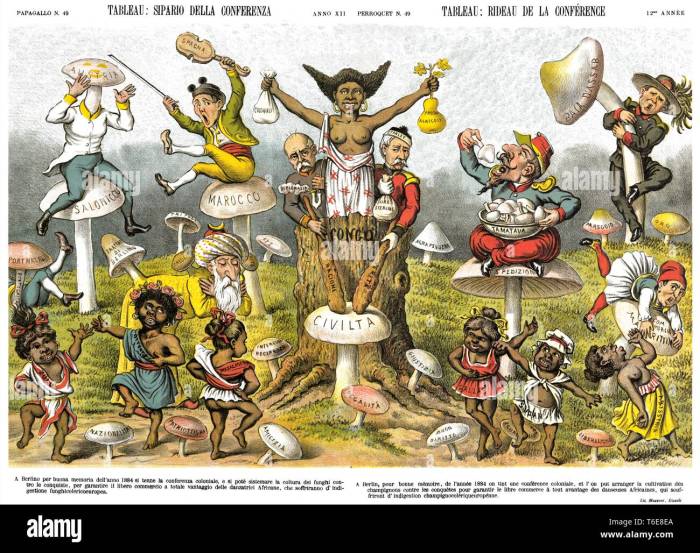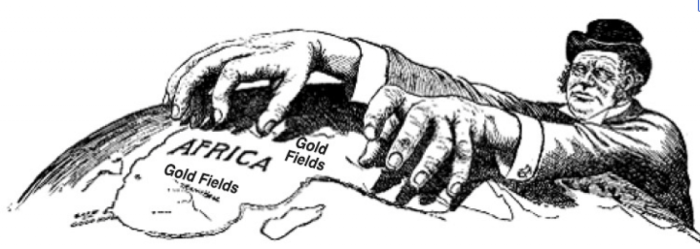In the rubber coils political cartoon – The “In the Rubber Coils” political cartoon, a poignant commentary on the political climate of its time, offers a captivating exploration of the complexities of power dynamics. This analysis delves into the symbolism, characterization, and artistic techniques employed to convey the artist’s incisive message.
The cartoon’s title, “In the Rubber Coils,” serves as a metaphor for the entangling and constricting nature of political power. The image of rubber coils evokes a sense of elasticity and resilience, suggesting the ability of those in power to manipulate and control.
Historical Context: In The Rubber Coils Political Cartoon

During the late 19th century, the United States experienced a period of rapid industrialization and economic growth. This era, known as the Gilded Age, was marked by both great wealth and widespread poverty.
The political climate of the Gilded Age was dominated by the Republican Party, which favored big business and economic growth. However, the Democratic Party, which supported the interests of farmers and laborers, was also gaining in strength.
The “Rubber Coils” Metaphor
The “rubber coils” metaphor in the cartoon refers to the political maneuvering and alliances that were common during the Gilded Age. Politicians would often form alliances with different groups and individuals, and then use those alliances to their advantage.
The “rubber coils” metaphor also suggests that the political system was corrupt and that politicians were more interested in their own personal gain than in the public good.
Symbolism and Meaning
The “In the Rubber Coils” political cartoon is a powerful visual commentary on the political climate of the United States in the late 1800s. The cartoon is filled with symbolism and imagery that convey the artist’s message about the political situation.
One of the most striking symbols in the cartoon is the octopus. The octopus is a common symbol of greed and corruption, and in this cartoon, it represents the corrupt politicians who are controlling the government. The octopus’s tentacles are wrapped around the Capitol building, which is a symbol of the government, and its eyes are fixed on the White House, which is a symbol of the presidency.
The Octopus’s Tentacles
The octopus’s tentacles represent the various ways that corrupt politicians control the government. One tentacle is wrapped around the Treasury, which is a symbol of the government’s money. Another tentacle is wrapped around the Judiciary, which is a symbol of the government’s courts.
A third tentacle is wrapped around the Army, which is a symbol of the government’s military.
Character Analysis

The cartoon depicts several characters, each representing different aspects of the political landscape. The central figure is a large, powerful-looking man with a top hat and a dollar sign on his chest. He represents the wealthy elite, who are often seen as having undue influence in politics.
Around the man are a group of smaller, more ordinary-looking people. These represent the common people, who are often struggling to make ends meet. They are depicted as being tied up in rubber coils, which symbolizes their lack of freedom and autonomy.
The actions and interactions of the characters contribute to the overall narrative of the cartoon. The man in the top hat is shown pulling on the rubber coils, which represents the way in which the wealthy elite exert control over the common people.
The common people are depicted as being helpless and unable to escape the coils, which symbolizes their lack of power and influence.
The Wealthy Elite
The wealthy elite are represented by the large, powerful-looking man in the top hat. He is depicted as being greedy and self-interested, only concerned with his own wealth and power. He is shown pulling on the rubber coils, which represents the way in which the wealthy elite exert control over the common people.
The Common People
The common people are represented by the group of smaller, more ordinary-looking people. They are depicted as being tied up in rubber coils, which symbolizes their lack of freedom and autonomy. They are shown as being helpless and unable to escape the coils, which symbolizes their lack of power and influence.
Artistic Techniques
The cartoon’s composition, color scheme, and other artistic elements contribute significantly to its impact.
The cartoon is visually striking, with a vibrant color scheme and bold lines. The use of contrasting colors, such as the bright yellow of the rubber coils and the deep blue of the background, creates a sense of tension and urgency.
The thick, black lines emphasize the sharp edges of the coils, making them appear more threatening and oppressive.
Symbolism
The use of symbols in the cartoon is also noteworthy. The rubber coils represent the oppressive forces that are strangling the economy and society. The coils are depicted as being elastic, suggesting that they can expand and contract to adapt to changing circumstances, making them even more dangerous.
Impact and Legacy
The immediate impact of the “In the Rubber Coils” cartoon was profound. It became an instant sensation, widely circulated in newspapers and magazines across the country. The cartoon’s scathing indictment of the political machine and its corrupt practices resonated deeply with the public, who were increasingly disillusioned with the status quo.
The cartoon’s message continues to resonate in contemporary political discourse. It serves as a reminder of the dangers of unchecked political power and the importance of citizen vigilance in holding their elected officials accountable. The cartoon’s imagery of the giant octopus, with its tentacles reaching into every corner of society, has become a powerful symbol of the corrupting influence of money and power in politics.
Impact on Political Reform
The “In the Rubber Coils” cartoon played a significant role in the growing movement for political reform in the late 19th and early 20th centuries. It helped to galvanize public support for measures such as the secret ballot, civil service reform, and campaign finance regulations.
These reforms aimed to reduce the influence of political machines and make the political system more responsive to the needs of the people.
Visual Representation
The cartoon’s visual elements convey powerful messages about the political climate of the time. A table below Artikels the key symbols, their meanings, and their significance in understanding the cartoon’s overall message.
Key Elements Table
| Symbol | Meaning | Significance |
|---|---|---|
| Rubber coils | Political parties and their ability to adapt and change | The coils symbolize the parties’ flexibility and resilience in responding to political pressures. |
| Teddy Roosevelt | The Republican Party | Roosevelt’s image represents the party’s strength and determination. |
| William Jennings Bryan | The Democratic Party | Bryan’s image represents the party’s opposition to Roosevelt and his policies. |
| Uncle Sam | The American people | Uncle Sam’s presence symbolizes the public’s involvement in the political process. |
| Political platform | The party’s principles and policies | The platform is a key factor in determining the party’s stance on issues. |
Comparative Analysis
The political cartoon “In the Rubber Coils” can be compared to other cartoons from the same era to provide a broader understanding of the political climate and artistic styles of the time. One notable comparison is with the cartoon “The Trusts and the People” by Joseph Keppler, published in Puckmagazine in 1889.
Similarities, In the rubber coils political cartoon
Both “In the Rubber Coils” and “The Trusts and the People” depict the power and influence of large corporations over the common people. In “In the Rubber Coils,” the trusts are represented as giant rubber coils that are strangling the people, while in “The Trusts and the People,” they are depicted as a group of wealthy men sitting on a pile of money, with the people being crushed beneath them.
Another similarity between the two cartoons is their use of exaggeration and satire to convey their message. In “In the Rubber Coils,” the trusts are depicted as being so powerful that they can literally strangle the people, while in “The Trusts and the People,” the wealthy men are shown as being so indifferent to the suffering of the people that they are laughing and smoking cigars while they sit on their pile of money.
Differences
One key difference between the two cartoons is their artistic style. “In the Rubber Coils” is a more traditional political cartoon, with a simple, black-and-white drawing style. “The Trusts and the People,” on the other hand, is a more elaborate cartoon, with a full-color illustration and a more complex composition.
Another difference between the two cartoons is their focus. “In the Rubber Coils” focuses specifically on the power of the trusts, while “The Trusts and the People” takes a broader view of the relationship between the wealthy and the poor.
Essential Questionnaire
What is the significance of the “rubber coils” metaphor?
The “rubber coils” represent the elastic and resilient nature of political power, suggesting the ability of those in power to manipulate and control.
How does the cartoon depict the characters involved?
The characters in the cartoon are portrayed as being entangled and constricted by the rubber coils, symbolizing their powerlessness and vulnerability.
What is the overall message of the cartoon?
The cartoon conveys a message about the corrupting and constricting nature of political power, and the challenges faced by those who seek to challenge it.